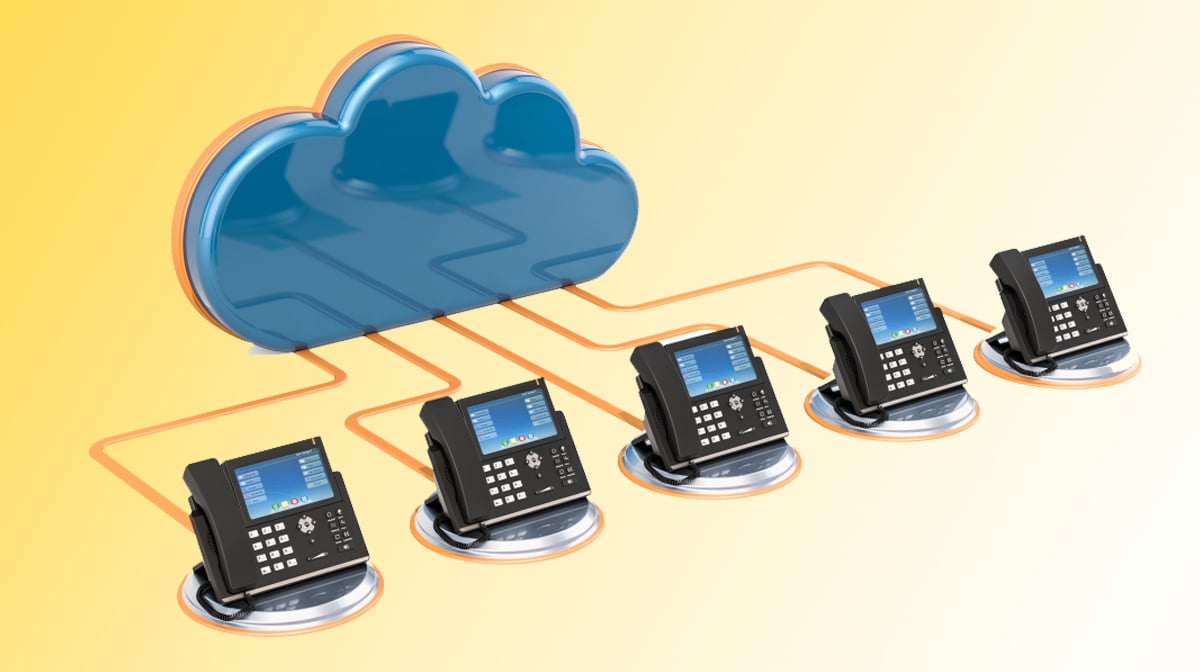Grandstream, a leader in SIP communication solutions, emerged into the networking solutions space in the fall of 2016 with a new line of Wi-Fi devices. As Grandstream has upgraded firmware, implemented new features and added new products to this line, it has proven to be a mainstay product category for Grandstream and we are excited to review two of their new access points, the GWN7630 and GWN7630LR!
TeleDynamics Think Tank
Daniel Noworatzky

Recent Posts
Why you need Grandstream’s GWN7630 & GWN7630LR APs in your Wi-Fi deployment
Topics: Grandstream, Product Review, Wi-Fi
What’s exceptional about Grandstream’s GRP2600 carrier-grade IP phones
Grandstream’s GRP2600 series of carrier-grade IP desk phones offers a range of reliable, high-performance IP endpoints to cover virtually any business telephone need, from entry-level phones all the way up to devices for high-call-volume users. In this article we review the five models in the series.
Topics: SIP Phones, Business Telephone System, SIP, Grandstream, Product Review
With advanced audio features, the Snom C520 conference phone is one of the most versatile conference phones on the market. Its expandability enables high-quality conferencing for close to 100 participants! In this article, we take a look at this remarkable conference phone.
Topics: Cordless, DECT, Conferencing, Product Review, Unified Communications, Snom
Review of Panasonic's modern KX-TPA68 cordless desk phone
In this article we take a look at the Panasonic KX-TPA68 SIP-DECT cordless desk phone, a next-generation cordless communication terminal designed for the KX-TGP600 SIP-DECT cordless phone system. Keep reading to learn about some of the features that makes this modern and elegant desk phone ideal for all types of small to medium-sized businesses.
Topics: Business Telephone System, SIP, Mobility (including remote work), Cordless, DECT, Product Review, Panasonic
Network function virtualization (NFV) and its benefits for VoIP
In today's virtual world, telecom and network services have come a long way, from being offered using locally installed, standalone monolithic servers to ethereal entities residing in the cloud. This evolution has touched every part of network service provisioning, and one of the most fascinating facets of this trend is that the network infrastructure itself can be virtualized.
Network function virtualization (NFV) is a network architecture philosophy that virtualizes the network infrastructure. In this article, we take a look at what NFV is, how it works, how it fits in with other virtualization technologies, and how it can be of benefit for enterprise networks.
Topics: Trends, Network Design, Cloud
Yealink, the leading global SIP phone manufacturer by market share, ranked number one in customer satisfaction among 17 VoIP telephony manufacturers rated in a survey of IT managers published by Eastern Management Group. In this article, we look at some of Yealink’s most noteworthy innovations that helped it secure the number-one spot.
Topics: Yealink, Videoconferencing, Conferencing, Unified Communications
Private, public and hybrid cloud deployments for VoIP services
The cloud is used to offer services directly to the end user, as well as to provide a platform on which vendors can develop their online applications (including VoIP) for their customers. In a previous article, we covered SaaS, PaaS and IaaS as the three most prominent cloud-based models that are used to offer services to clients. In this article, we take a more in-depth look at the various cloud deployment models that are available (including private, public and hybrid) and how they are useful for businesses of different sizes. The article concludes with the factors to consider when choosing which deployment model to use when offering VoIP and other cloud services to your customers.
Topics: Customer Service, Business Telephone System, VoIP, Total Voice Solution, Trends, Cloud, Business Strategy, Unified Communications
Yealink expands its range of Zoom Room solutions with the CP960-UVC30
Product Review
Expanding on its line of solutions for Zoom Rooms, Yealink has launched the newest model in its line of CP960-UVC Zoom Rooms Kits: The UVC30, for huddle rooms and other small meeting spaces. In this article, we review this new model and show how it fits in with the rest of the series.
Topics: Yealink, Videoconferencing, Product Review, Unified Communications
The three most prominent cloud services models for VoIP
Cloud computing has had an irreversible impact on how IP telephony and other network services are delivered. In this article, we look at the three most common cloud service models and how they are used to deliver telecommunications and other services to connected businesses. By adding cloud-based services to your arsenal of offerings, you can deliver more value to your customers by proposing a wider range of services to them.
How virtualization revolutionizes VoIP deployment
Redundancy and scalability are important for VoIP systems. Virtualization makes both of these easier, less costly, and more efficient. Coupled with cloud services, virtualization has revolutionized how network services are provided, and in particular, how VoIP deployment is executed.
In this article, we explain what virtualization is, the trends governing its newest technologies, and how all of this can be leveraged for use with VoIP services.
Topics: VoIP, Trends, Productivity, Network Design
Welcome to our Think Tank
In this blog you'll read our thoughts on business telephone systems. While a lot has changed in telecom since TeleDynamics was founded in 1981, we remain as committed as ever to delivering the best customer service in the industry.
If you would like elaboration on a specific topic, please let us know in the comments section.
Happy reading and thanks for stopping by!
Receive New Articles by Email

Recent Posts
Posts by Topic
- 5G
- AI
- Android
- Avaya
- Bluetooth
- Boom Collaboration
- Business Continuity
- Business Strategy
- Business Telephone System
- Case Study
- Catalog
- Cisco
- Cloud
- Collaboration
- Communication
- Conferencing
- Cordless
- CPaaS
- Customer Service
- Customer Success Story
- CyberData
- DECT
- E911
- Events
- Facility Management
- Firewall
- Firmware Upgrades
- FoIP
- Gateway
- Grandstream
- Headsets
- Home Security
- IoT
- IP PBX
- Jabra
- Konftel
- Leasing
- Microsoft
- Mobile
- Mobility (including remote work)
- NEC
- Network Design
- Network Infrastructure
- Network Security
- News
- OTT VOIP
- Outsourcing
- Panasonic
- Peripherals
- PoE
- Polycom
- Power Management
- Product Review
- Productivity
- Protocols & codecs
- QoS
- Regulations
- Routers
- SD-WAN
- SIP
- SIP Phones
- Snom
- Software Integration
- Surveillance
- Switches
- Total Voice Solution
- TP-Link
- Trends
- Troubleshooting
- UCaaS
- Unified Communications
- Videoconferencing
- VLAN
- Voicemail
- VoIP
- VoWi-Fi
- VTech
- WAN Technology
- Wi-Fi
- Wireless
- WISP
- Yealink
- Yeastar
- Zoom
















